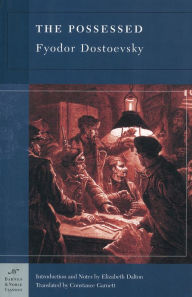Read an Excerpt
From George Levine’s Introduction to Silas Marner and Two Short Stories
Of all George Eliot’s novels, Silas Marner (1861) is the shortest and perhaps the most accessible to modern readers. That is partly because it is the only one of her novels that has the atmosphere of a fable, and indeed seems to have been deliberately written as one. The very qualities of apparent simplicity, clarity, and directness that have always made it among the most popular of her novels have also made it seem as though it is not quite as serious, not quite as “real” as the other much longer and more complex works, most notably Middlemarch (1872), universally recognized as her masterpiece and arguably the greatest nineteenth-century English novel.
Unusual as it seems, among Eliot’s other more imposing works, Silas Marner is not as atypical as it at first appears to be. In fact, no book of Eliot’s gives more immediate access to the mysteries of her art, or rather, to the central preoccupations, formal and thematic, that determine the shape and style of her novels, and to the difficulties and potential contradictions they confront. Silas Marner, for all its fairy-tale aspects, is also a “realistic” novel, firmly set in time and place, sharply observed, focused not on the extraordinary, but on the everyday. And just as Silas Marner has elements of realism, so the larger works reveal elements of the kind of fable we find here. It does not take very close reading (which every book of George Eliot always deserves and requires) to detect the “fabulous” qualities behind the massive and complex structures of her more evidently realistic work: There is more than a touch of the legendary in Romola (1863, written just after Silas Marner), and even in Middlemarch, where fable is more elaborately disguised, and certainly in her last great work, Daniel Deronda (1877). Silas Marner, then, is interestingly representative of the work of one of the greatest of nineteenth-century novelists, at the same time as it is satisfyingly brief, precisely constructed, and yet full of the intelligence and circumstantial precision that mark all of Eliot’s earlier fiction.
The great late books struggle—usually brilliantly, sometimes with “the odor of the lamp” upon them, as Henry James complained—to get the details of context right and full. The very abundance of contextual detail, of plot and of character, complicates and largely disguises the directness of the moral passion that drives them. George Eliot, a novelist with a moral mission, was too wise to think that morality was a simple matter of right and wrong. And yet, while Silas Marner is brilliantly crafted, it gives off an air of spontaneity and ease that her contemporaries greatly admired (and they often complained that the later novels had lost just that sense of spontaneity as they grew more apparently solemn and philosophical). While all of Eliot’s fiction (except for the remarkable short story “The Lifted Veil,” included in this volume) are written from the point of view of a sage narrator who does not often hesitate to intrude and comment on the action, Silas Marner ’s narrator is quite restrained, although also notably learned and sophisticated. Her eye is on the action, and for the most part, she simply tells the story, swiftly and efficiently, commenting on it only occasionally, though pithily.
Throughout her career, Eliot was committed, as she claimed, to keep her stories from lapsing from “the picture to the diagram.” She did not want to preach abstractly but, believing that truth is the basis of all moral life, to render faithfully the real world and the real people who lived in it. True morality, she argued, entails recognition of the realities of the world we live in. “Depend upon it,” she wrote in her first published story, “The Sad Fortunes of the Reverend Amos Barton”: “You would gain unspeakably if you would learn with me to see some of the poetry and pathos, the tragedy and the comedy, lying in the experience of a human soul that looks out through dull grey eyes, and that speaks in a voice of quite ordinary tones.” Her “strongest effort,” she wrote in Adam Bede (1859) “is to give a faithful account of men and things as they have mirrored themselves in my mind.”
Why then, one might ask, does Silas Marner feel so much like a fable with a moral? Doesn’t it, as it deals out its punishment for Godfrey Cass’s youthful failure or redeems Silas from the moral isolation caused by his friend’s betrayal and his own subsequent miserliness, feel just a bit too much like a “diagram”? It is easy to take this remarkable novel as itself too easy, rendering a bit too much “poetic justice.” But the texture of the narrative belies the simplicity of its apparent moralizing. Although this is a fable, it contains all its characters within a clearly defined historical and social context, and it allows nobody the kind of heroism that fables usually require. Only Eppie may seem unnaturally endowed with virtue and education, and happily, unlike Dickens with his Oliver Twist, she speaks with the same dialect as those among whom she has lived all her life. Nevertheless, Nancy Lammeter points out that Eppie “doesn’t look like a strapping girl come of working parents.”















